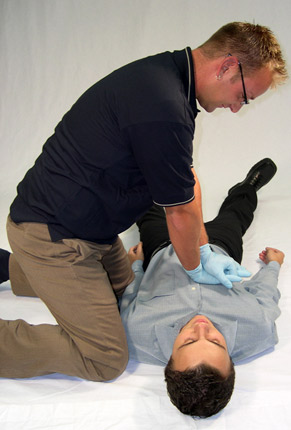Three levels of CPR training - A, B, C - are designed to meet
the needs of both the public and professional rescuers like
lifeguards. Learn CPR skills and the signs, symptoms and care of
choking, non-breathing and pulseless victims. CPR courses teach the
risk factors associated with heart disease and how to prevent them
or reduce their effects. All Lifesaving Society CPR training is
consistent with standards established by the Heart and Stroke
Foundation of Canada.
CPR-A
CPR-A(Adult) teaches how to do CPR and choking procedures for
adults and includes the importance of early defibrillation and how
to use an AED.
CPR-B
CPR-B (Adult, Child & Infant teaches parents, grandparents,
babysitters, or child care workers the CPR and choking procedures
for adults, children and infants. CPR-B includes the importance of
early defibrillation and how to use an AED.
CPR-C
CPR-C (Adult, Child & Infant) covers all aspects of CPR
skills and theory for adult, child and infants, including
two-rescuer CPR skills. CPR-C includes the importance of early
defibrillation and how to use an AED.
:::

CPR-HCP
CPR-HCP (Adult, Child & Infant, AR, AED, BVM) covers all
aspects of CPR including rescue breathing and the use of AEDs and
BVMs. This Health Care Provider (HCP) level is designed
specifically for those who as part of the job description as Health
Care Providers have a duty to respond to medical emergencies (e.g.,
doctors, nurses, paramedics, and allied health care
professionals).